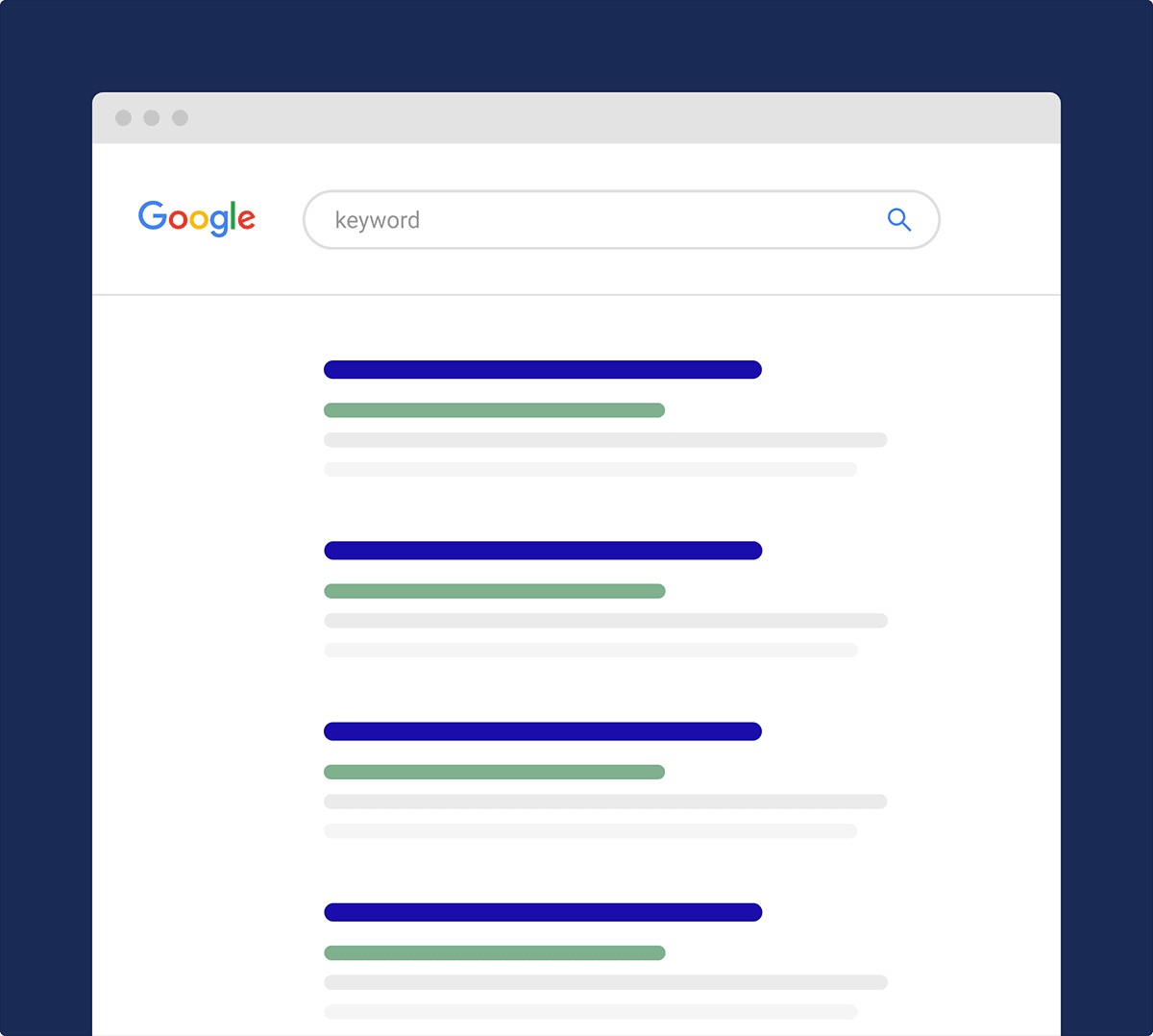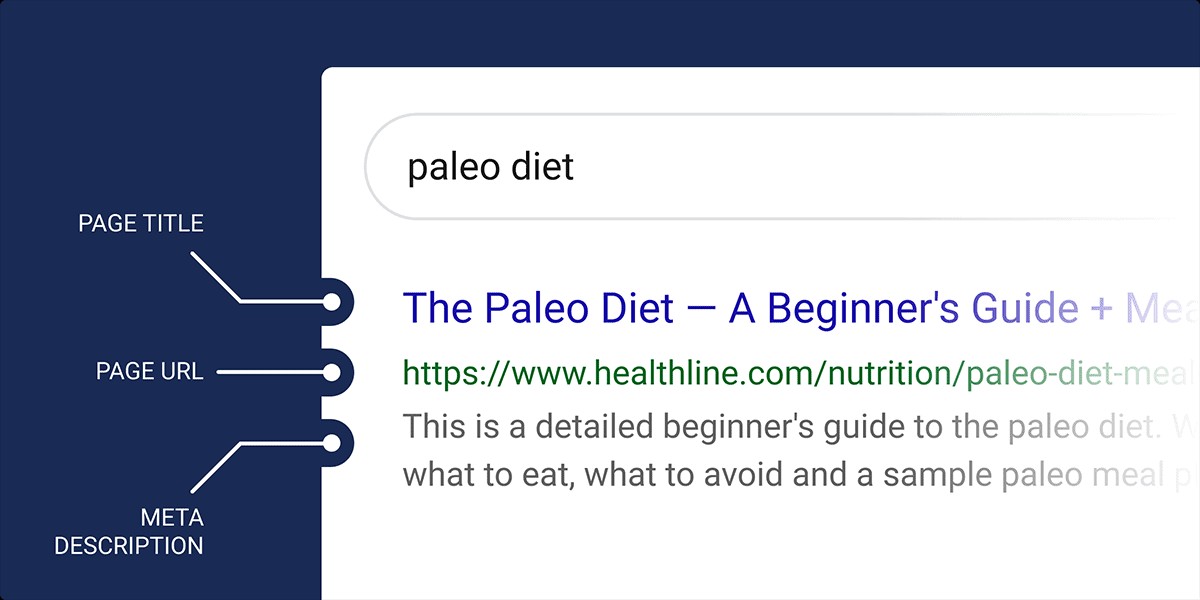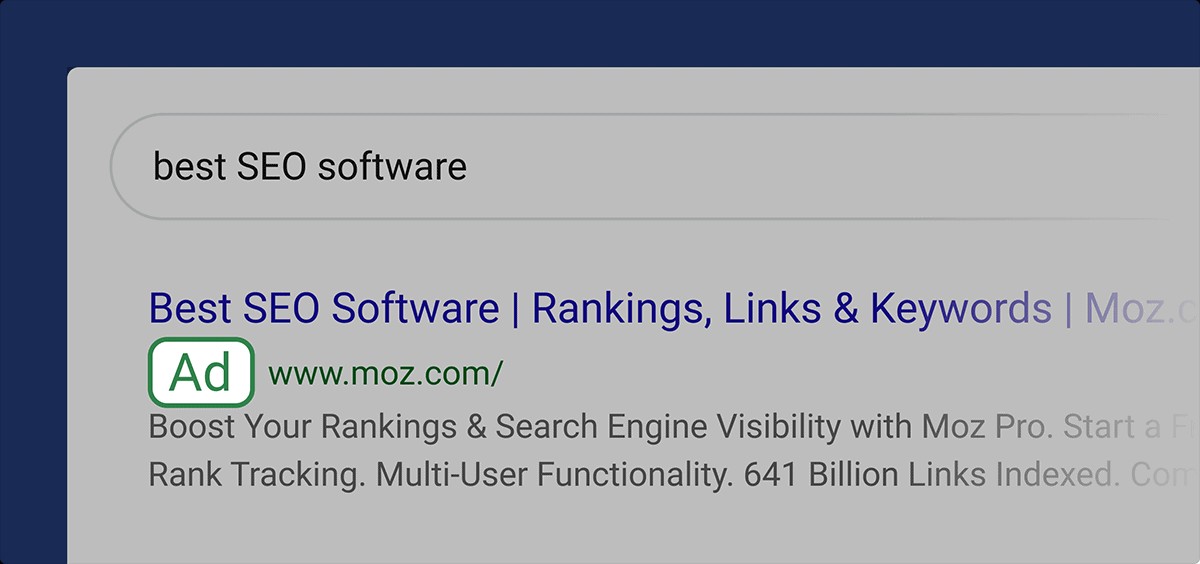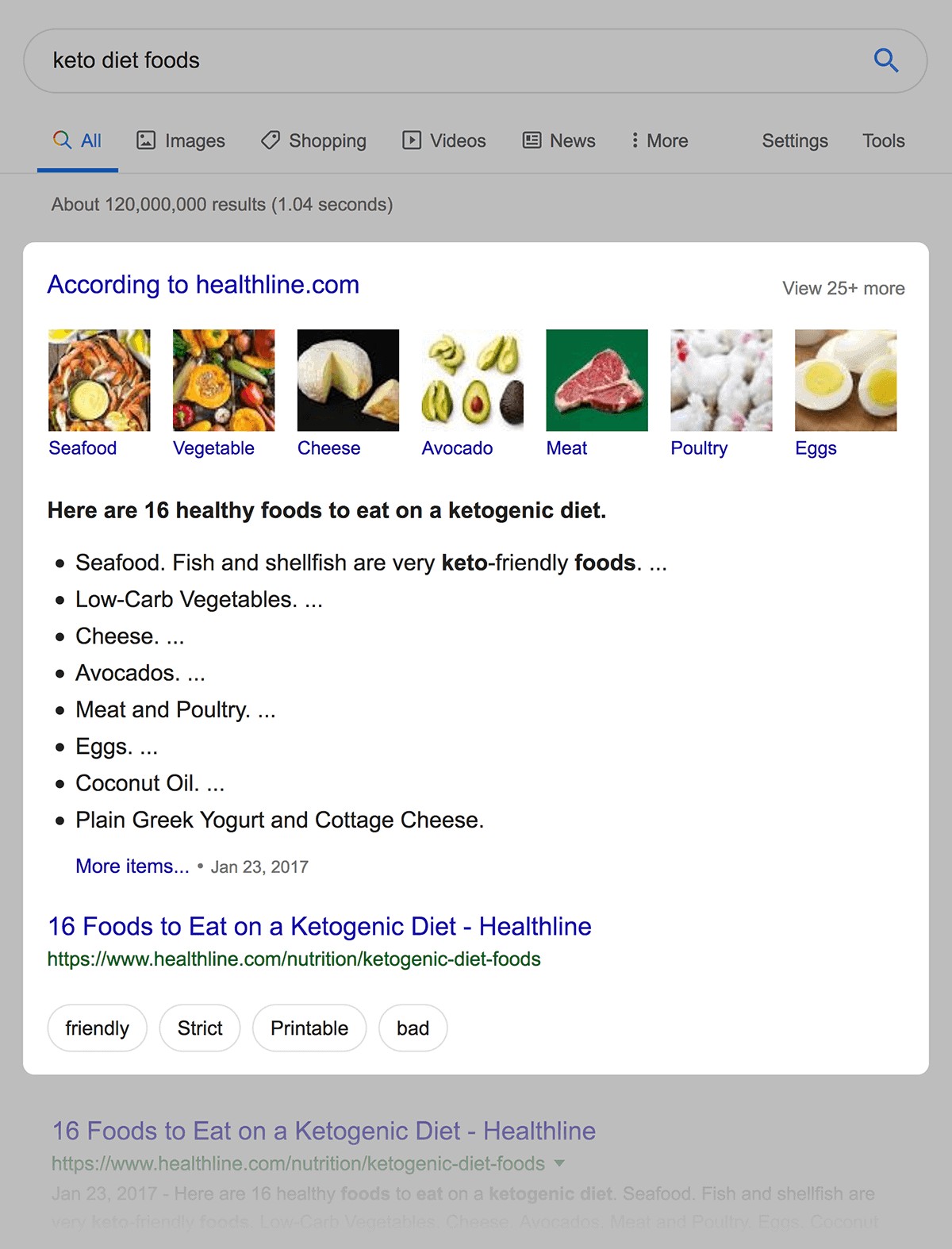What Is Serp? Search Engine Results Pages are the gateway to online information, providing users with relevant results based on their queries. At WHAT.EDU.VN, we understand the importance of SERPs and how they connect you to the answers you seek. Dive in to learn more about result pages, google rankings and search visibility.
1. Defining the Search Engine Results Page (SERP)
The Search Engine Results Page, or SERP, is what you see after you submit a query to a search engine like Google. It’s the search engine’s response, displaying a mix of organic and paid results designed to provide the most relevant information to your search. Understanding the anatomy of a SERP is crucial for anyone looking to navigate the online world effectively.
1.1. Key Components of a SERP
A typical SERP includes several key components:
- Organic Search Results: These are unpaid listings that the search engine algorithm deems most relevant to your query. Their position is based on factors like content quality, relevance, and authority.
- Paid Search Results (Ads): These are advertisements that businesses pay to display for specific keywords. They are usually marked with an “Ad” label.
- SERP Features: These are additional elements that enhance the SERP, such as Featured Snippets, Knowledge Panels, Image Packs, Video Carousels, and more.
1.2. Evolution of SERPs Over Time
SERPs have evolved significantly over the years. Early SERPs were simple lists of blue links, but modern SERPs are much more dynamic and interactive, incorporating a wide range of features to provide a richer user experience. This evolution reflects Google’s ongoing efforts to better understand user intent and deliver the most relevant and useful information.
2. The Significance of SERPs for SEO
For businesses and website owners, understanding SERPs is fundamental to Search Engine Optimization (SEO). The goal of SEO is to improve a website’s visibility in organic search results, driving more traffic and ultimately achieving business objectives.
2.1. How SERPs Influence Website Traffic
The higher your website ranks in the SERPs, the more likely users are to click on it. Studies have shown that the top positions in organic search receive the majority of clicks, with click-through rates (CTR) declining sharply for lower positions. This makes it essential to optimize your website for relevant keywords and aim for top rankings.
2.2. Impact of SERP Features on Organic Visibility
SERP features can significantly impact organic visibility. For example, a Featured Snippet can steal clicks from the top-ranking organic result, while the presence of ads can push organic results further down the page. Understanding how these features affect your target keywords is crucial for developing an effective SEO strategy.
2.3. Analyzing SERPs to Refine SEO Strategies
Analyzing SERPs for your target keywords can provide valuable insights into user intent, competitor strategies, and opportunities for optimization. By examining the types of content that rank well, the SERP features that appear, and the keywords that trigger those features, you can refine your SEO strategies to improve your website’s visibility and attract more relevant traffic.
3. Types of Search Results on a SERP
SERPs display a variety of search results, each serving a different purpose and catering to different user needs. Understanding these different types of results is key to crafting a comprehensive SEO and content strategy.
3.1. Organic vs. Paid Results: A Detailed Comparison
- Organic Results: These are the “natural” results that appear based on the search engine’s algorithm. They are earned through effective SEO practices and high-quality content.
- Paid Results: These are advertisements that businesses pay for to appear at the top or bottom of the SERP. They are marked with an “Ad” label and are based on a bidding system for specific keywords.
While organic results offer long-term, sustainable traffic, paid results provide immediate visibility and can be useful for targeted campaigns.
3.2. Understanding Different SERP Features
SERP features are non-traditional results that appear on the SERP. They aim to provide users with quick answers and relevant information directly on the search results page. Some common SERP features include:
- Featured Snippets: A short excerpt from a webpage that answers a user’s question directly on the SERP.
- Knowledge Panels: Information boxes that provide facts and details about people, places, or things.
- Image Packs: A collection of relevant images related to the search query.
- Video Carousels: A row of videos that appear for certain search queries.
- Local Packs: A listing of local businesses related to the search query, often displayed with a map.
- People Also Ask (PAA): A box of related questions that users often ask.
- Top Stories: A section displaying recent news articles related to the search query.
- Twitter Results: Real-time tweets related to the search query.
- Shopping Results: A display of products available for purchase related to the search query.
3.3. How to Optimize for Different Result Types
Optimizing for different result types requires a tailored approach. For example, to target Featured Snippets, you need to provide concise, direct answers to common questions. To rank in Local Packs, you need to optimize your Google My Business profile. Understanding the specific requirements for each result type is crucial for maximizing your visibility on the SERP.
4. Dive Deeper into Organic Search Results
Organic search results are the cornerstone of SEO. They represent the unpaid listings that the search engine algorithm deems most relevant to a user’s query. Understanding how these results are ranked and how to optimize for them is essential for driving organic traffic to your website.
4.1. Factors Influencing Organic Rankings
Google’s algorithm uses over 200 ranking factors to determine the order of organic search results. Some of the most important factors include:
- Relevance: How well your content matches the user’s search query.
- Content Quality: The depth, accuracy, and uniqueness of your content.
- Authority: The credibility and trustworthiness of your website, often measured by backlinks from other reputable sites.
- User Experience: The ease of use and overall satisfaction of users visiting your website, including factors like site speed, mobile-friendliness, and site architecture.
4.2. Analyzing Organic Snippets: Title Tags, Meta Descriptions, and URLs
Organic snippets consist of three main elements:
- Title Tag: The title of your webpage, which appears as the clickable headline in the search results.
- Meta Description: A brief summary of your webpage’s content, which appears below the title tag.
- URL: The web address of your webpage.
Optimizing these elements is crucial for attracting clicks and improving your organic rankings. Your title tag should be compelling and accurately reflect the content of your page. Your meta description should entice users to click by highlighting the benefits of visiting your website. Your URL should be clean, concise, and relevant to the content of your page.
4.3. The Role of Structured Data in Enhancing Organic Results
Structured data, also known as schema markup, is code that you can add to your website to provide search engines with more information about your content. This can help search engines understand the context of your content and display it in a more visually appealing way in the search results, such as with rich snippets. Rich snippets can include review stars, event details, product information, and more, which can improve your CTR and drive more traffic to your website.
5. Exploring Paid Search Results (Ads)
Paid search results, or ads, are a prominent feature of SERPs, allowing businesses to gain immediate visibility for their products and services. Understanding how paid search works and how to optimize your ad campaigns is essential for driving targeted traffic to your website.
5.1. Understanding Google Ads and the Auction Process
Google Ads is the platform that allows businesses to create and manage their paid search campaigns. The Google Ads auction determines which ads appear on the SERP and in what order. Advertisers bid on specific keywords, and the winning ads are displayed based on factors like bid amount, ad quality, and relevance.
5.2. Key Elements of a Paid Search Ad
A typical paid search ad consists of several key elements:
- Headline: The main text of your ad, designed to grab the user’s attention.
- Description: Additional text that provides more details about your product or service.
- Display URL: The URL that is displayed in your ad, which should be relevant to the landing page.
- Ad Extensions: Additional features that can be added to your ad, such as sitelinks, callouts, and location extensions.
5.3. Optimizing Ad Campaigns for Maximum ROI
Optimizing your ad campaigns is crucial for maximizing your return on investment (ROI). This involves:
- Keyword Research: Identifying the most relevant and profitable keywords for your business.
- Ad Copywriting: Crafting compelling ad copy that attracts clicks and drives conversions.
- Landing Page Optimization: Creating landing pages that are relevant to your ads and designed to convert visitors into customers.
- A/B Testing: Experimenting with different ad variations to identify the most effective combinations.
- Performance Monitoring: Tracking your campaign performance and making adjustments as needed to improve your results.
6. Decoding SERP Features: Enhancing Search Results
SERP features are non-traditional results that appear on the SERP, providing users with quick answers and relevant information directly on the search results page. Understanding these features and how to optimize for them can significantly enhance your website’s visibility and attract more traffic.
6.1. Featured Snippets: Capturing Position Zero
Featured Snippets are short excerpts from a webpage that answer a user’s question directly on the SERP. They appear at the very top of the search results, in what is often referred to as “Position Zero.”
To capture a Featured Snippet, you need to provide concise, direct answers to common questions related to your target keywords. Use clear and simple language, and format your content in a way that is easy for Google to understand, such as with bullet points, numbered lists, or tables.
6.2. Knowledge Panels: Providing Information at a Glance
Knowledge Panels are information boxes that provide facts and details about people, places, or things. They often appear on the right side of the SERP and are sourced from a variety of sources, including Wikipedia, Wikidata, and Google’s Knowledge Graph.
To influence the information that appears in your Knowledge Panel, you can claim and verify your business listing on Google My Business. You can also contribute to relevant Wikipedia pages and ensure that your business information is consistent across the web.
6.3. Local Packs: Connecting with Local Customers
Local Packs are a listing of local businesses related to the search query, often displayed with a map. They appear for searches with local intent, such as “restaurants near me” or “plumbers in Seattle.”
To rank in Local Packs, you need to optimize your Google My Business profile with accurate and complete information, including your business name, address, phone number, website, hours of operation, and categories. You should also encourage customers to leave reviews on your Google My Business profile and respond to reviews promptly.
6.4. People Also Ask (PAA): Uncovering Related Questions
The People Also Ask (PAA) box is a SERP feature that displays a list of related questions that users often ask. When you click on a question, it expands to reveal a short answer, often taken from a Featured Snippet.
The PAA box can be a valuable source of content ideas, as it provides insights into the questions that your target audience is asking. You can use these questions to create blog posts, FAQs, and other types of content that address user needs and improve your website’s visibility in search results.
6.5. Image and Video Carousels: Showcasing Visual Content
Image and video carousels are SERP features that display a collection of relevant images or videos related to the search query. They often appear for searches where visual content is particularly relevant, such as “cute cats” or “how to tie a tie.”
To rank in image and video carousels, you need to optimize your visual content with relevant keywords, descriptive filenames, and alt text. You should also ensure that your images and videos are high-quality and engaging.
7. Mobile SERPs vs. Desktop SERPs: Understanding the Differences
With the increasing use of mobile devices, it’s essential to understand the differences between mobile SERPs and desktop SERPs. Mobile SERPs are designed to provide a user-friendly experience on smaller screens, and they often feature different types of results and layouts than desktop SERPs.
7.1. How Mobile-Friendliness Impacts Rankings
Google prioritizes mobile-friendly websites in mobile search results. This means that if your website is not optimized for mobile devices, it may rank lower in mobile SERPs. To ensure that your website is mobile-friendly, you should use a responsive design that adapts to different screen sizes. You should also optimize your website’s loading speed and ensure that it is easy to navigate on mobile devices.
7.2. Unique SERP Features on Mobile Devices
Mobile SERPs often feature unique SERP features that are designed for mobile users, such as:
- Click-to-Call Buttons: Allow users to call a business directly from the search results.
- Directions Buttons: Provide users with directions to a business location.
- App Packs: Display a collection of relevant apps related to the search query.
7.3. Optimizing for Mobile SERPs: A Comprehensive Guide
To optimize for mobile SERPs, you should:
- Ensure that your website is mobile-friendly.
- Optimize your website’s loading speed.
- Use a responsive design.
- Optimize your Google My Business profile for local searches.
- Target mobile-specific keywords.
- Use structured data to enhance your mobile search results.
- Monitor your mobile rankings and traffic.
8. The Future of SERPs: Trends and Predictions
SERPs are constantly evolving, driven by changes in user behavior, technological advancements, and Google’s ongoing efforts to improve the search experience. Understanding the future trends and predictions for SERPs can help you stay ahead of the curve and prepare your SEO strategies for the changes to come.
8.1. The Rise of Voice Search and Its Impact on SERPs
Voice search is becoming increasingly popular, as more and more people use voice assistants like Siri, Alexa, and Google Assistant to search for information. Voice search queries are often longer and more conversational than traditional text-based searches, and they tend to focus on specific questions or tasks.
To optimize for voice search, you should:
- Focus on long-tail keywords.
- Answer common questions related to your business.
- Use natural language in your content.
- Optimize your website for local search.
- Claim and verify your Google My Business profile.
8.2. AI and Machine Learning: Personalizing Search Results
Artificial intelligence (AI) and machine learning are playing an increasingly important role in search. Google is using AI to better understand user intent, personalize search results, and deliver more relevant and useful information.
As AI continues to evolve, we can expect to see even more personalized and dynamic SERPs. This means that it will be increasingly important to understand your target audience and create content that is tailored to their specific needs and interests.
8.3. The Continued Importance of User Experience (UX)
User experience (UX) has always been an important ranking factor, but it is becoming even more critical as Google places more emphasis on user satisfaction. A positive user experience can lead to higher rankings, more traffic, and increased conversions.
To improve your website’s UX, you should:
- Ensure that your website is easy to navigate.
- Optimize your website’s loading speed.
- Use a clean and modern design.
- Create high-quality, engaging content.
- Make sure your website is mobile-friendly.
- Monitor your website’s user engagement metrics, such as bounce rate and time on page.
9. Tools for SERP Analysis: Gaining Competitive Insights
Analyzing SERPs is crucial for understanding the competitive landscape and identifying opportunities for optimization. There are a variety of tools available that can help you analyze SERPs and gain valuable insights into your competitors’ strategies.
9.1. Overview of Popular SERP Analysis Tools
Some popular SERP analysis tools include:
- SEMrush: A comprehensive SEO toolkit that includes features for keyword research, rank tracking, site audits, and competitor analysis.
- Ahrefs: Another popular SEO toolkit that offers similar features to SEMrush, with a focus on backlink analysis.
- Moz: A well-known SEO platform that provides tools for keyword research, rank tracking, and site audits.
- SERPwoo: A specialized SERP tracking tool that provides detailed information about SERP features and ranking fluctuations.
- Google Search Console: A free tool from Google that provides insights into your website’s performance in search results.
9.2. How to Use These Tools to Identify Opportunities
These tools can be used to:
- Identify your competitors’ top-ranking keywords.
- Analyze the SERP features that appear for your target keywords.
- Track your website’s rankings over time.
- Identify opportunities for content creation and optimization.
- Monitor your competitors’ backlink profiles.
By using these tools effectively, you can gain a competitive edge and improve your website’s visibility in search results.
10. Frequently Asked Questions (FAQs) About SERPs
Here are some frequently asked questions about SERPs:
| Question | Answer |
|---|---|
| What is a SERP? | A Search Engine Results Page (SERP) is the page that a search engine displays in response to a user’s query. |
| Why are SERPs important for SEO? | SERPs determine how your site appears on Google’s first page. The higher your website ranks in the SERPs, the more likely users are to click on it. |
| What are the different types of search results on a SERP? | Organic results, paid results (ads), and SERP features like Featured Snippets, Knowledge Panels, Image Packs, Video Carousels, Local Packs, People Also Ask, Top Stories, Twitter Results, and Shopping Results. |
| What factors influence organic rankings? | Relevance, content quality, authority, and user experience. |
| How can I optimize my website for mobile SERPs? | Ensure your website is mobile-friendly, optimize loading speed, use responsive design, optimize your Google My Business profile for local searches, target mobile-specific keywords, and use structured data. |
| What is a Featured Snippet and how can I capture it? | A short excerpt from a webpage that answers a user’s question directly on the SERP. Provide concise, direct answers to common questions, use clear language, and format content with bullet points, lists, or tables. |
| What are some tools for SERP analysis? | SEMrush, Ahrefs, Moz, SERPwoo, and Google Search Console. |
| How is AI impacting SERPs? | AI is being used to better understand user intent, personalize search results, and deliver more relevant and useful information. |
| What is the role of UX in SERP rankings? | User experience (UX) is becoming even more critical as Google places more emphasis on user satisfaction. |
| How can I stay up-to-date with the latest changes in SERPs? | Follow industry blogs, attend SEO conferences, and use SERP analysis tools to monitor changes in search results. |




Unlock Answers and Connect with Knowledge at WHAT.EDU.VN
Navigating the complex world of SERPs can be challenging, but understanding the key elements and trends can help you optimize your website and attract more traffic.
Do you have questions about SERPs or any other topic? Don’t hesitate to ask!
Visit WHAT.EDU.VN today to ask your questions and receive free answers from our community of experts. We’re here to help you find the information you need, quickly and easily.
Contact Us:
- Address: 888 Question City Plaza, Seattle, WA 98101, United States
- WhatsApp: +1 (206) 555-7890
- Website: WHAT.EDU.VN
Let what.edu.vn be your go-to resource for all your questions. We’re dedicated to providing you with the knowledge and support you need to succeed in the digital world.

